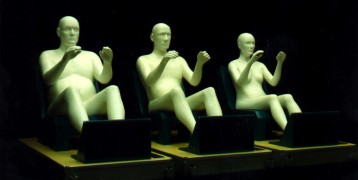>>> Research: Anthropometry
Engineering Anthropometry

Anthropometry is the measurement of people and the analyses of those measurements for various purposes. Anthropometry began as a methodology in physical anthropology for comparing populations, but since the 1950s engineering anthropometry is directed at the acquisition, analysis, and application of human body dimensions (and more generally physical measurements) to the design and assessments of products, tools, workspaces, and other artifacts with which people interact. The University of Michigan Transportation Research Institute (UMTRI) has a long history of conducting widely used anthropometric studies, including the most widely used studies of U.S. children and adult motor vehicle occupants.
Our Humanshape.org site is our primary method for distributing our 3D anthropmetric information.
Our recent research has included detailed studies of adult vehicle occupants, including truck drivers. We have gathered extensive data on child body shape and posture, with an emphasis on supported seated postures. We are applying advanced shape modeling methods to study and predict adult and child body surface geometry, as well as using similar methods to model skeletal geometry for adults and children. Click the links below for more information on our current research.
©2024 Matthew P. Reed and The University of Michigan